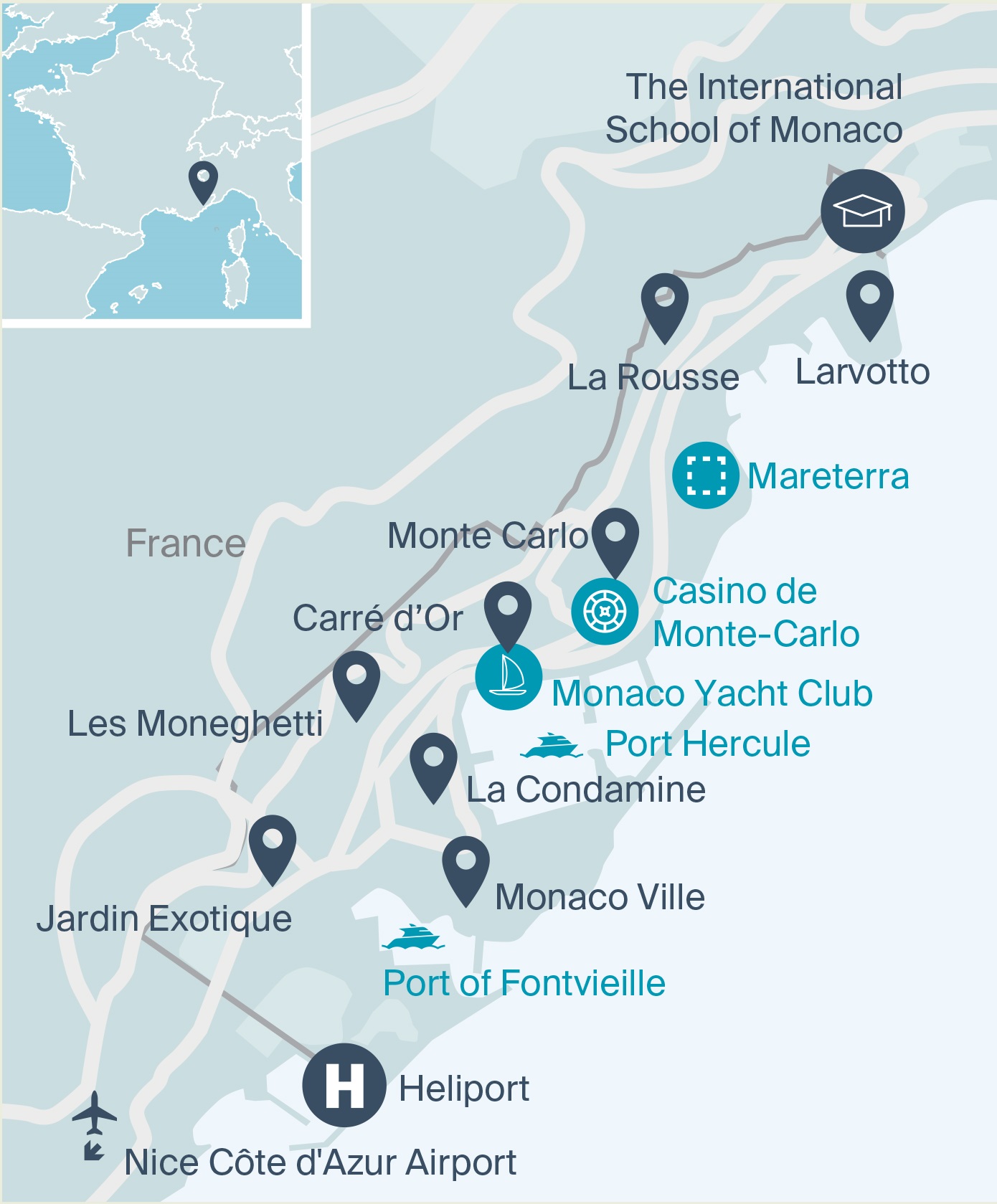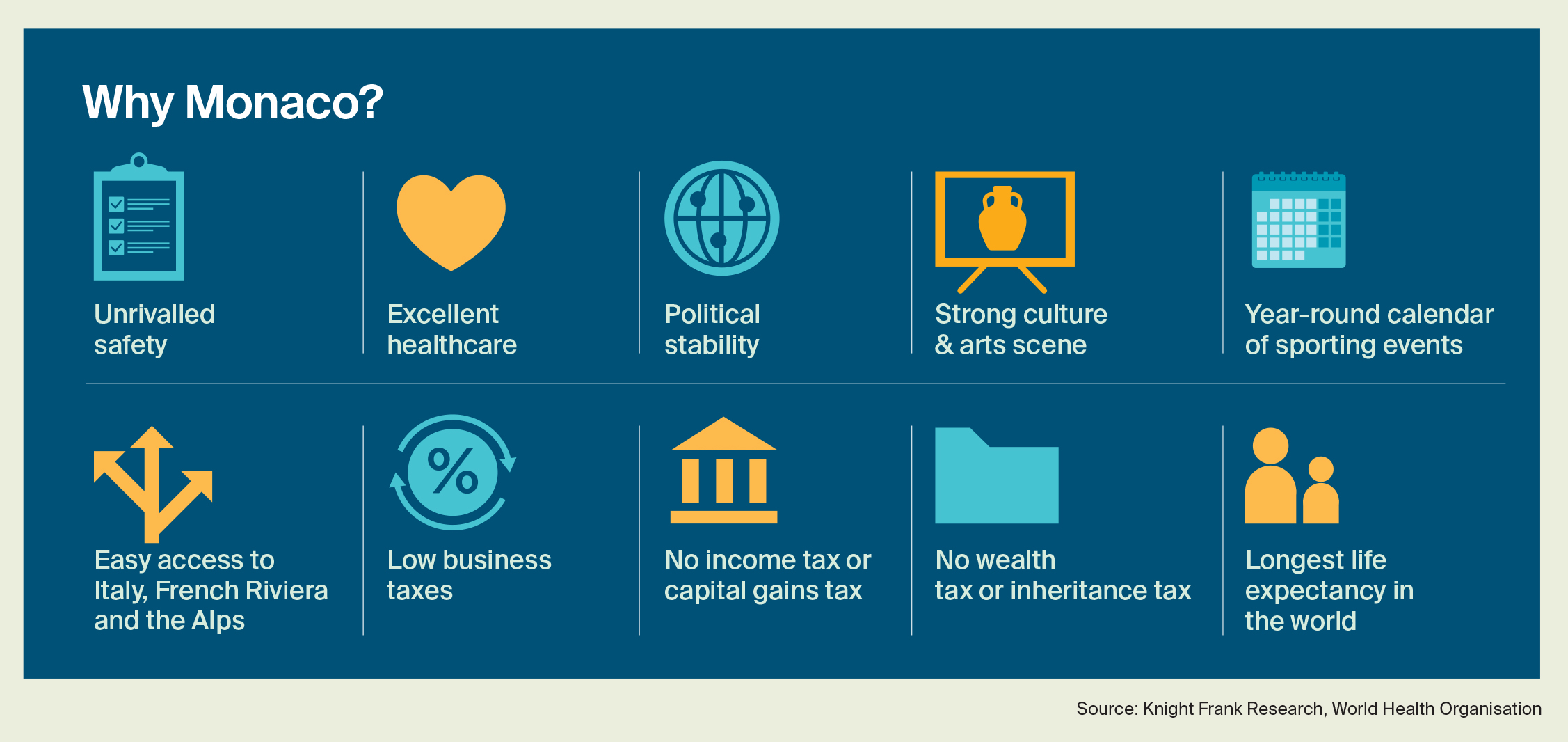Monaco's appeal is undimmed
Monaco, with a population of 38,367, is home to approximately 141 nationalities, all within an area that’s just over half the size of Central Park.
1 minute to read

Despite its small footprint, Monaco remains a top contender among global safe havens and low-tax jurisdictions. According to Knight Frank’s wealth sizing model, the number of ultra-high- net-worth individuals – those with a net worth of US$30 million or more – is expected to rise by 23% in the next five years, while the population of dollar millionaires is projected to grow by 43% during the same period.
With just 21,123 dwellings, 81% of which are privately owned, Monaco faces significant pressure to expand to meet housing demand. After years of undersupply, two major projects are slated for completion this year, though both are mostly sold out.
The first, Bay House, consists of two 25-storey towers that will add 56 apartments and five rooftop villas. Developed by Groupe Marzocco, the same firm behind Le Tour Odéon, Bay
House is part of the larger Testimonio II project, which also includes a nursery and a new site for Monaco’s renowned International School.
The second project, Mareterra, is a €2 billion land reclamation effort that will expand Monaco’s surface area by 3%. Most units have already sold, with some commanding prices of €100,000 per square metres or more. The development features 110 apartments and 10 villas, six of which will be waterfront properties. With renowned architect Renzo Piano a key draw,
the project will also offer a waterside promenade, a retail plaza, and a small marina.
However, it’s not just the ultra- wealthy facing housing challenges. Monegasques, who make up a third of Monaco’s 39,000 residents, are also feeling the strain. To address this, Prince Albert launched a 15-year housing plan in 2019, aiming to boost the number of state-owned apartments by 43%, reaching 4,548 units.

Sign up here to receive our monthly European residential newsletter